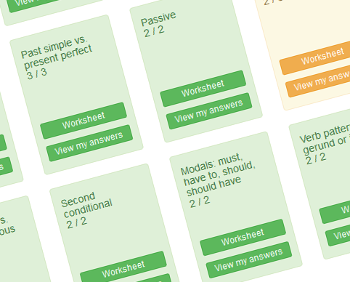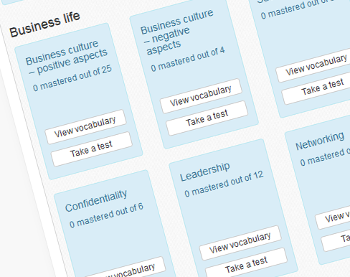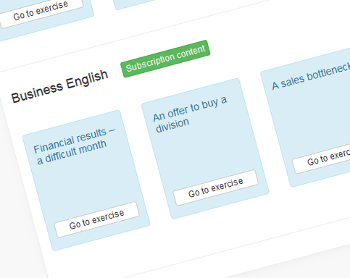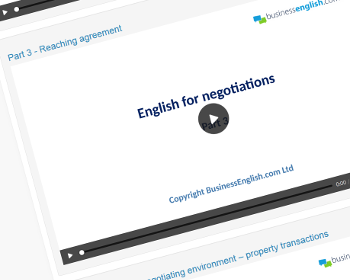Relative clauses
Relative pronouns part 2
(See beginner worksheet for an introduction)where, whose, whom
Relative clauses tell us what person or thing someone is talking about, or give us more information about that person or thing.
We use "where", "whose" and "whom" as relative pronouns to:
- replace the subject or object
- introduce a relative clause
- connect separate clauses together in a single sentence.
Example
We use "where" to talk about a place:

We use "whose" for possession; to replace possessive adjectives such as my, his, her, etc.:
That’s the man whose dog bit me.
"Whose" can be used for people and things:
That’s the school whose director was sacked for changing grades.
We can use "whom" instead of "who" when the object of the verb is in the relative clause, and also with prepositions:
That’s the man whom I married.
Marie is the woman with whom I work.
However, "whom" is a formal word and it is more usual to use "who" or "that":
That’s the man who I married.
Marie is the woman that I work with.
Practice
Complete the sentences with "where", "whose" or "whom":
.Relative clauses
There are two types of relative clause: defining and non-defining.- A defining relative clause gives us information necessary to understand the sentence.
- A non-defining relative clause gives us extra information without which we could still understand the main part of the sentence.
Example
- Defining relative clause
The man lives next door to me.
This sentence needs more information: "The man" refers to a specific man but, without further explanation, we cannot know which man the speaker is talking about:
The man who wants to marry my sister lives next door to me.
The defining relative clause in the sentence clarifies which man the speaker is talking about.
- Non-defining relative clause
William Shakespeare wrote 154 sonnets.
This sentence stands alone because we know who the speaker is talking about. It is clearly stated: William Shakespeare. However, if we choose to add more information, we can, using a non-defining relative clause:
William Shakespeare, who died in 1616, wrote 154 sonnets.
The non-defining relative clause in this sentence gives us extra information.
Note that a non-defining relative clause is separated by commas.
Also, the relative pronoun that can only be used in a defining relative clause.
Also, the relative pronoun that can only be used in a defining relative clause.
Practice
Should the relative clause in each sentence be separated by commas?
.Relative clauses without "who", "that", "which"
Sometimes we can leave out the relative pronouns "who", "that" and "which". We can do this when the relative pronoun is the object not the subject of the verb.Example
Relative pronoun as subject:
The dog which ran away has been found.
In this sentence, "the dog" is the subject: "the dog ran away", therefore, we must use a relative pronoun. We cannot say:
Relative pronoun as object:
The gentleman that I interviewed didn't speak any Spanish.
I interviewed the gentleman.
In this sentence, "the gentleman" or "that" is the object of the verb so we can leave it out:
The gentleman I interviewed didn't speak any Spanish.
The man who I saw on the bus was crying.
I saw the man.
The man I saw on the bus was crying.
The flower which I picked in the park died.
I picked the flower.
The flower I picked in the park died.
Practice
Can we leave out the relative pronoun in these sentences?
.Further practice
Choose the correct option a, b, c or d:.
Create a free Getting Started account
Related links
The following exercises include use of this grammar structure:
You might also be interested in:
- Business English vocabulary exercises
- Listening Pro account
- Reading Pro account
- Scenario-based dictation exercises – business English Pro account
You might also be interested in:
Beginner
- Past simple
- Past continuous
- Present simple
- Present continuous (present)
- Present perfect
- 'Going to' and 'will'
- Present continuous (future)
- Imperatives
- To be
- Pronouns: subject, object
- Pronouns: relative
- Adjectives and pronouns: possessive
- Adjectives and pronouns: demonstrative
- Basic adjective word order
- WH questions (interrogative pronouns)
- Articles: a, an, the
- Prepositions: time and place
- There is/ there are and quantifiers
- Conjunctions and, or, but
- Comparatives / superlatives (than)
- Zero conditional (if)
- First conditional (if)
- Modals: can/can't, could, will, shall
- Verb patterns
- Sequence adverbs
Intermediate
- Past perfect
- Past simple vs. present perfect
- Past simple vs. past continuous
- Present perfect continuous
- Future simple
- Future continuous
- Passive
- Indirect speech
- Used to/would
- Second conditional
- Third conditional
- Relative clauses
- Reflexive pronouns
- Modals: must, have to, should, should have
- Verb patterns: gerund or infinitive
- Adverbs of degree
- Adjective order
- Adjectives: ed or ing
Grammar
Quickly identify and focus on grammar issues:
- Grammar worksheets and test
- Scenario-based grammar exercises
- Grammar additional practice questions
- Verb conjugation practice
- Conditionals practice
Improve your grammar
Vocabulary
Vocabulary exercises:Expand your vocabulary using our three vocabulary trainers:Practice your spelling using our three spelling tests:Practice vocabulary relating to graphs and charts:
Learn vocabulary
Dictation exercises
Practice your listening skills and spelling using our dictation exercises:
- Scenario-based dictation exercises - general English
- Scenario-based dictation exercises - business English
- Dictation: focus on grammar
- Numbers
Complete dictation exercises
Video lessons
Focus on specific areas of business English using our video lessons:
Take a video lesson





